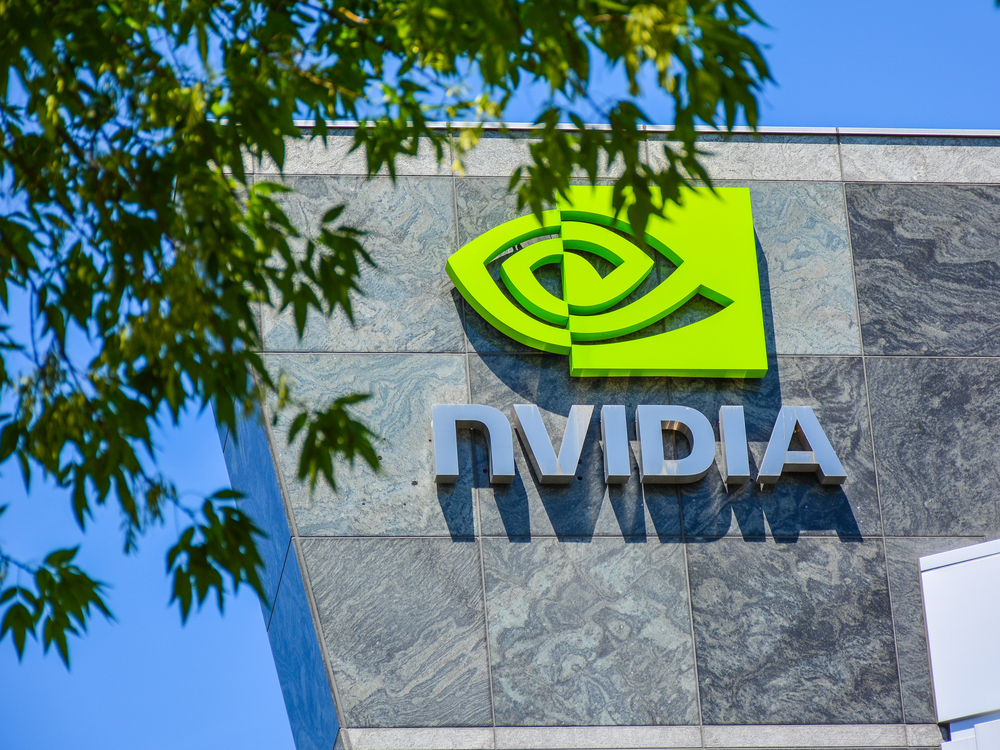Shares of Nvidia (NVDA) skyrocketed close to 30% after its blowout first quarter earnings results and better-than-expected Q2 guidance. The stock gained $184 billion in one day, vaulting it past momentum darlings such as Tesla (TSLA). But while some critics might want to call the response a fantasy, there are reasons to believe that Nvidia’s gains are here to stay.
The company reported Q1 adjusted EPS of $1.09 on revenue of $7.19 billion, beating consensus estimates of 92 cents on revenue of $6.52 billion. But it was the company’s guidance and its assured leading position as an AI chip supplier that got investors excited, guiding for Q2 revenue of $11 billion, crushing estimates for revenue of $8.5 billion. The result was enough to send the stock within reach of a trillion-dollar valuation.
The stock closed on Friday at $389.46, rising 2.54% for the day, adding to its weekly gain of 24.57%. The stock has skyrocketed 44.5% in thirty days, while soaring 166% year to date, demolishing the 9.5% rise in the S&P 500 index. To put its gain in perspective, the stock has surged 235% since bottoming out at $112 on Oct. 14. Expand that horizon by twelve months, Nvidia is up 120%, while the S&P 500 has risen just 3.64%.
Without question, Nvidia’s valuation has surpassed what the company’s current fundamentals suggests it should be worth. But that does not mean the gains are unsustainable or the stock can’t go even higher. “What can we say other than just WOW,” Evercore analyst C.J. Muse wrote in a Wednesday note to investors. The analyst raised his 12-month price target on the stock to $500 from $320 and reiterated his Outperform rating. This target assumes additional premiums of close to 30%.
Here’s what we know. Investors’ intoxication with Artificial Intelligence, in particular ChatGPT, will continue to grow. Nvidia CEO Jensen Huang has declared that generative AI represents an “iPhone moment.” It’s no coincidence that Nvidia’s popularity first spiked around the same time the market began pivoting towards generative AI models such as ChatGPT, in which Microsoft (MSFT) has made a significant investment via its partnership with OpenAI.
Investors have recognized the importance of Nvidia’s GPU data center accelerators which can potentially serve as the backbone for generative AI infrastructure. On the conference call with analysts, Nvidia’s CFO Colette Kress affirmed that belief that data centers will inevitably switch to Nvidia’s products incorporating AI. “Generative AI is driving exponential growth in compute requirements and a fast transition to NVIDIA accelerated computing,” Kress said.
Meanwhile, CEO Huang, in a press release, issued the sort of outlook that suggests Nvidia’s leadership in Generative AI is all but assured. “A trillion dollars of installed global data infrastructure will transition…to accelerated computing as companies race to apply AI to every product, service, and business process,” wrote Huang. The demand for Nvidia’s GPUs based on its Hopper and Ampere architecture was noticeable in its just-announced results.
During the quarter, Nvidia’s data center revenue rose 14% year over year, reaching a record high of $4.28 billion. Aside from growing demand for generative AI, the revenue growth was driven by large language models utilizing Nvidia’s GPUs. In terms of profits, Nvidia’s adjusted gross margin came in at 66.8%, up 70 basis points sequentially. With margins back on the rise, Nvidia’s quarterly free cash flow grew 51% sequentially to $2.64 billion in Q1 from $1.74 billion in Q4.
Nvidia continues to enjoy not only tons of AI tailwinds, but also the company’s fundamentals continues to improve evidenced by its margin improvement. As such, despite the stock reaching all-time high levels, the best play here is to stay invested and add on any dips. The stock is poised to reach $500 by the end of the year.
The views and opinions expressed herein are the views and opinions of the author and do not necessarily reflect those of Nasdaq, Inc.
Image and article originally from www.nasdaq.com. Read the original article here.

